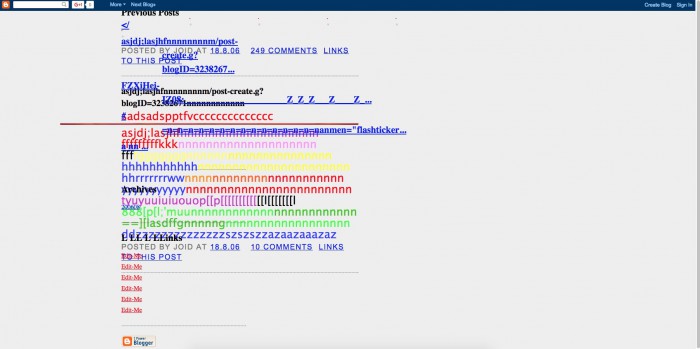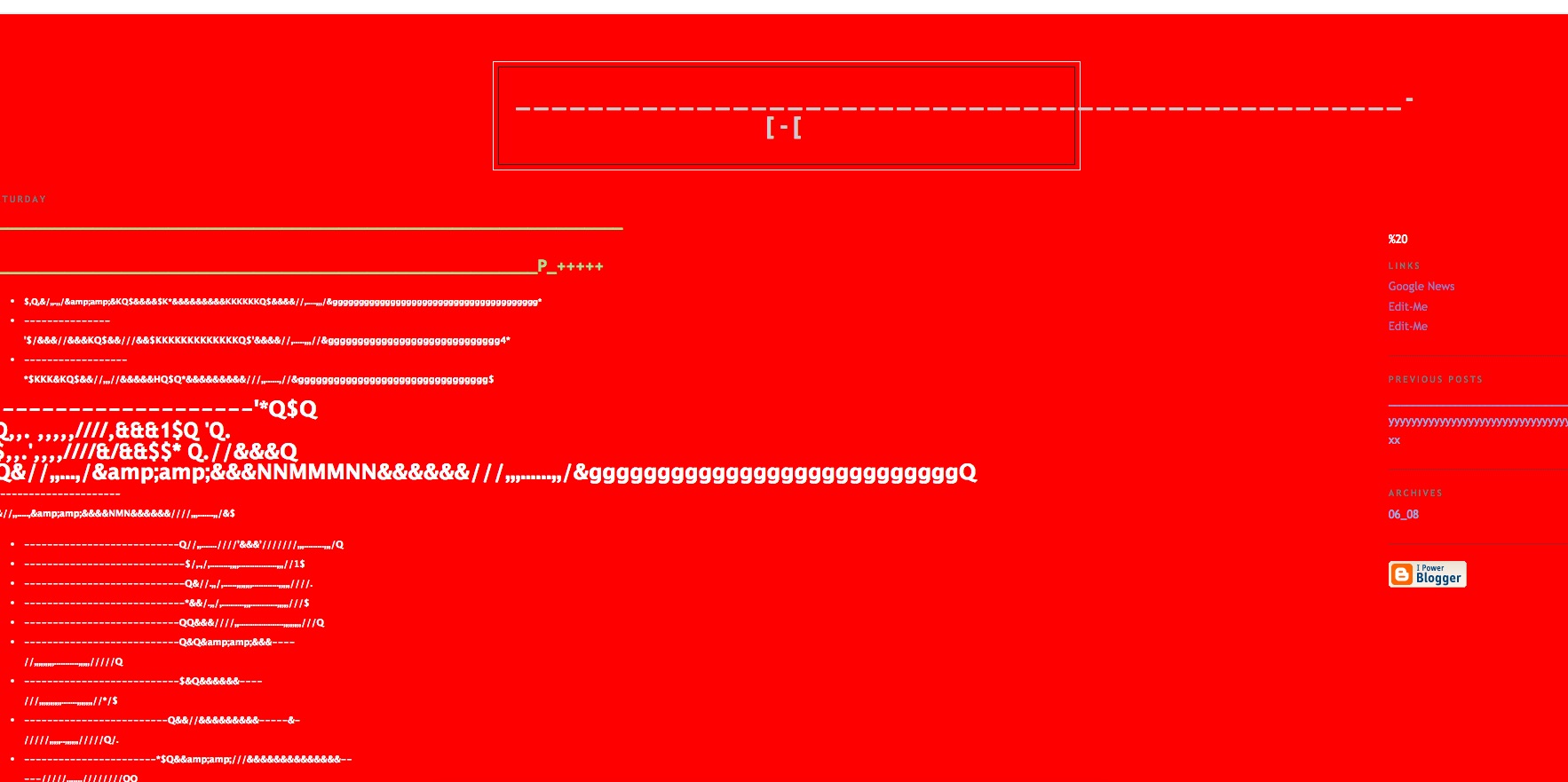
During 2006 and 2007, Jodi made the work <$blogtitle$>, based on the social publishing tool Blogger, from Google.13 <$blogtitle$> looks like a Blogger page in a broken state. The pages generated by Jodi’s (mis)usage of the tool are either filled with gibberish or in ruins. It’s hard to say: perhaps you are looking at back-end code.
Jodi indeed plays with different language systems, for instance the visual and the non-visual source (code) of the Blogger software. Template formats such as the title of the blog, the post headers and certain blog addresses in the link list appear all in ruins, while Blogger-specific images like comment-icons, dates and additional otherwise functional visual elements are now reduced to theatrical objects.
glitch’s formal fragmentation signifies that the work is ‘open’ to inter- pretation and meaningful engagement.
By ruining the Blogger medium, Jodi’s use of formal fragmentation opens the platform itself up to deconstruction, interpretation and further active engagement. As a result, the meaning of the ruined work is never finished, whole or complete.
However, for the reader to actually give meaning to the ruins, they must take the initiative of imposing (their own select) new constraints, new frameworks of analysis and limitations on other possibilities.
this openness also had a negative consequence: Blogger interpreted the blog as a malicious spamblog and consequently blocked it. This act could be described as a rather rigorous ‘death of the author’, in which the meaning of the work is not negotiated, but instead dismissed and deleted.
<$blogtitle$>, Jodi shows that a glitch can be com- pletely constructed (by the artist), but also that such constructs can in turn reveal the con- structedness of software-generated knowledge and expression.
— Rosa Menkman, The Glitch Moment(um)
Jodi.org is the brainchild of two Internet artists, Joan and Dirk. Keying jodi.org into your address bar spawns a series of webpages that are rather crazy, like they are taking over your browser. Some of the effects generated by the website include: constant page redirects, flashing images, auto-downloads, wacky URLs. Their style of internet art/glitch art have been described by Wikipedia as “the work of an irrational, playful, or crazed human.”
One of the side projects that resulted from Jodi.org was the duo’s experiments with Blogger pages. I came across the work while reading Rosa Menkman’s Glitch Moment(um) essay.
Jodi deconstructed the standard Blogger pages, causing it to look broken. The pages looked like what would happen if you enter the source code of the pages and remove some important parts of coding, that renders certain functions useless (i.e incomplete HTML coding to display an image, that resulted in a broken image icon).
I find this work quite an important point of reference for my WordPress theme sketch, which Boyan, Cynthia and I are working on, especially when I think about how I can deconstruct my blog archive by manipulating the functions of a WordPress blog: perhaps altering how categories/tags are being displayed.


